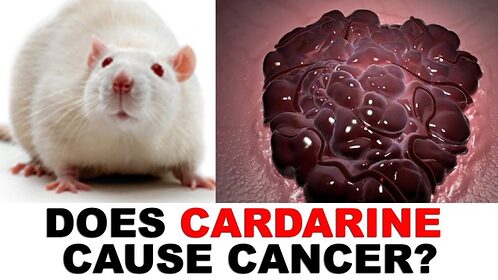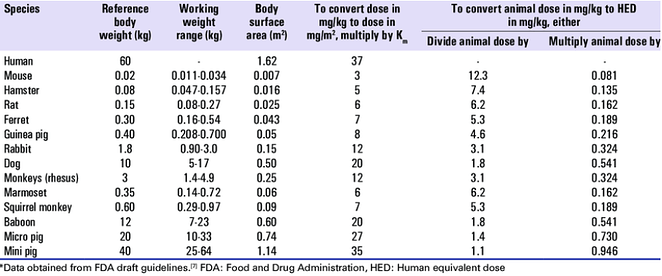Grr… Took less than 5 minutes of “research” to find this -.-
Cardarine Side Effects
Now that we have gone over the benefits of GW 50156, let’s take a look at the side effects.
Cardarine went through a lot of studies and research. So far, only one side effect was revealed and that is:
- Accelerated development of cancerous tumors
The 2007 GSK (GlaxoSmithKline) conducted a study that showed an accelerated cancerours tumor development in rats that were taking Cardarine.
Some people are very skeptical of this study because they used absurd dosages of Cardarine for extremely long cycle periods. Since 2007, there have also been a lot of studies that are contradictory to the one that showed cancer development. Basically, the whole thing is a bit controversial.
Let’s go over this in-depth and explain when you should and when you shouldn’t worry about this.
Cardarine Cancer
The thought of Cardarine accelerating the development of cancerous tumors is the reason why a lot of people aren’t using it even though it might be great for them. But are we really in the risk of developing cancer if we cycle GW 50156?
As of 2020, there have been 0 cases of documented cancer in people linked to Cardarine. Still, you need to be carefu and know everything about this compounds correlation to cancer. Let’s dive right in.
When it comes to the topic of Cardarine causing cancer, we have a lot of studies to look at.
On one side, we have the study that most of you already know. It was responsible for the discontinuation of Cardarine in 2007. Basically, it showed that the rats who were given Cardarine experienced fast development of cancerous tumors.
On the other side, we have a bunch of newer studies that proved that Cardarine doesn’t cause cancer at normal dosages for normal cycle length. In fact, the studies proved that at normal dosages, Cardarine has anti-cancer properties.
These studies are:
To better explain this, let’s first go over cycle length and the dosages that the rats were given in the 2007 study.
What Cycle Length And Dosages Did Rats Get
A lot of people and a ton of websites claim that the rats were given a huge amount of Cardarine. Some of them are just listing random numbers like 50x, 70x, or even 100x the recommended dosage. But what dosages did they actually get?
The lowest dosage at which neoplastic was found in rats (neoplastic is just another word for tumors or cancerous tumors) was at 3mg a day.
Now let’s turn this 3mg a day dosage in rats to a human equivalent dosage (HED). We will use the human equivalent dose calculation based on body surface area from ResearchGate (picture below).
Human Equivalent Dose(mg/kg) = Animal Dose(mg/kg) x [Animal Km / Human Km]
= 3 x (6/37)
= 0.48 mg/kg
Where Animal Km is 6 for rats, and 37 for humans, and 3mg is the lowest dose where neoplastic findings were found.
For a 190 pound / 85 kg person, this is the equivalent of 40.8mg per day. Or 43.2mg per day for a 90kg person.
So as you can see, the dosages used were about 4x bigger than the recommended dosages, not 100x or 50x as some people claim.
Another important thing is the cycle length used in the study. The study ran for 104 weeks, which is about 13x more than the maximum recommended cycle length of 8 weeks.
To summarize, the dosages used in the infamous rat study were 3x higher than recommended and the length of the study was 13x longer than the recommended cycle length.
Keep in mind that it took all of this, 3x higher dosages, and an absurd cycle length for cancer to show up.
If you take normal dosages and stick to normal cycle length, you will almost certainly be fine. Some recent studies even confirm this, let’s look into them.
Cardarine Has Anti-Cancer Properties – Study
This GW 50156 study proved that Cardarine doesn’t cause cancer at high dosages and short cycle lengths.
I recommend that you read the study for yourself if you are interested, it’s very long and in-depth. If you don’t have the time, however, let me summarize it for you.
Neither GW compound increased cell growth or phosphorylation of Akt and no increase in the expression of VEGF or COX2 were detected in any cancer cell line in the presence or absence of serum. Similarly, liver, colon and colon polyps from mice administered these compounds did not exhibit changes in these markers.
Essentially, this study proved that Cardarine doesn’t cause the development of cancerous tumors even at high dosages for normal periods of time. Not only that, the compound was shown to actually have some anti-cancer properties in this period.
They used dosages comparable to taking 154mg a day as a 90kg person. These high dosages didn’t show any signs of cancer development at cycle lengths of 7 days.
Basically, this means that high dosages for normal periods of time won’t cause cancer and we could assume that the reason cancer occurred in the 2007 rat study was because of the absurd cycle length (104 weeks), not the high dosages or maybe a combination of the two.
Cardarine Cancer – Conclusion
Let’s summarize the topic of GW 50156 causing cancer.
Yes, Cardarine can cause cancer, but only if taken at high dosages (over 40 mg a day) for a very long period of time (104 weeks in the case of 40mg a day). Obviously, a 100mg a day dosage could cause cancer sooner, at 50 weeks.
If you take Cardarine correctly and stick to normal cycle lengths and dosages, you wont have any problems. In fact, a study actually proved that GW 50156 actually has anti-cancer properties if taken accordingly.
This redditor also adds a very nice point to all of this:
As of 2020, there have been no documented cases of cancer in humans linked to Cardarine. I assume that this is the case because nobody is taking it for 104 weeks straight at 40mg a day.
Make sure to follow these two rules to be safe:
- Normal cycle length (maximum of 8 weeks)
- Normal dosages (maximum of 15-20mg a day)


